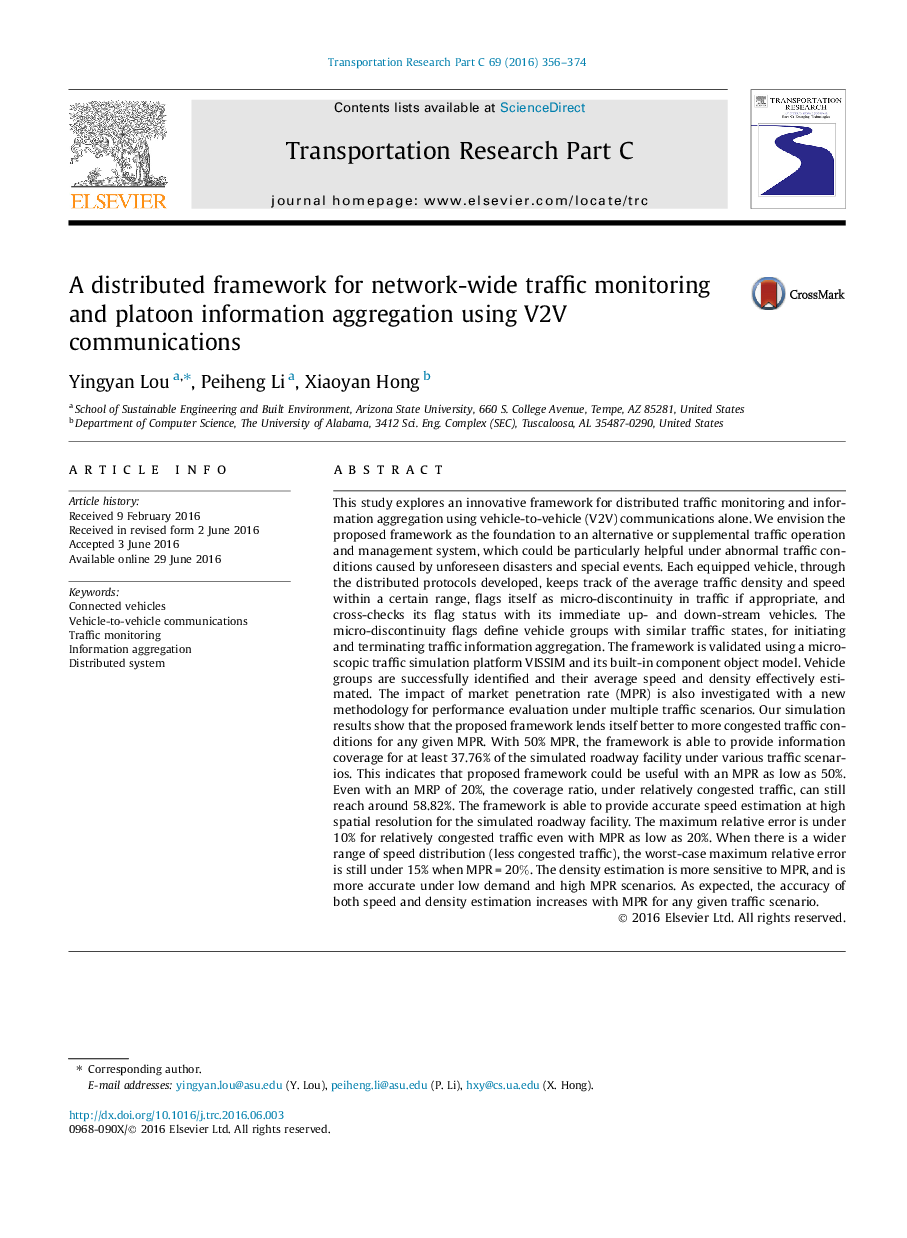| کد مقاله | کد نشریه | سال انتشار | مقاله انگلیسی | نسخه تمام متن |
|---|---|---|---|---|
| 524736 | 868851 | 2016 | 19 صفحه PDF | دانلود رایگان |
• A distributed framework for roadway traffic monitoring is proposed.
• The framework relies solely on vehicle-to-vehicle communications.
• Platoons of similar traffic states are identified by distributed algorithms.
• Traffic speed and density are effectively estimated at high spatial-resolution.
• The distributed framework could be useful even with low market penetration rates.
This study explores an innovative framework for distributed traffic monitoring and information aggregation using vehicle-to-vehicle (V2V) communications alone. We envision the proposed framework as the foundation to an alternative or supplemental traffic operation and management system, which could be particularly helpful under abnormal traffic conditions caused by unforeseen disasters and special events. Each equipped vehicle, through the distributed protocols developed, keeps track of the average traffic density and speed within a certain range, flags itself as micro-discontinuity in traffic if appropriate, and cross-checks its flag status with its immediate up- and down-stream vehicles. The micro-discontinuity flags define vehicle groups with similar traffic states, for initiating and terminating traffic information aggregation. The framework is validated using a microscopic traffic simulation platform VISSIM and its built-in component object model. Vehicle groups are successfully identified and their average speed and density effectively estimated. The impact of market penetration rate (MPR) is also investigated with a new methodology for performance evaluation under multiple traffic scenarios. Our simulation results show that the proposed framework lends itself better to more congested traffic conditions for any given MPR. With 50% MPR, the framework is able to provide information coverage for at least 37.76% of the simulated roadway facility under various traffic scenarios. This indicates that proposed framework could be useful with an MPR as low as 50%. Even with an MRP of 20%, the coverage ratio, under relatively congested traffic, can still reach around 58.82%. The framework is able to provide accurate speed estimation at high spatial resolution for the simulated roadway facility. The maximum relative error is under 10% for relatively congested traffic even with MPR as low as 20%. When there is a wider range of speed distribution (less congested traffic), the worst-case maximum relative error is still under 15% when MPR = 20%20%. The density estimation is more sensitive to MPR, and is more accurate under low demand and high MPR scenarios. As expected, the accuracy of both speed and density estimation increases with MPR for any given traffic scenario.
Journal: Transportation Research Part C: Emerging Technologies - Volume 69, August 2016, Pages 356–374
